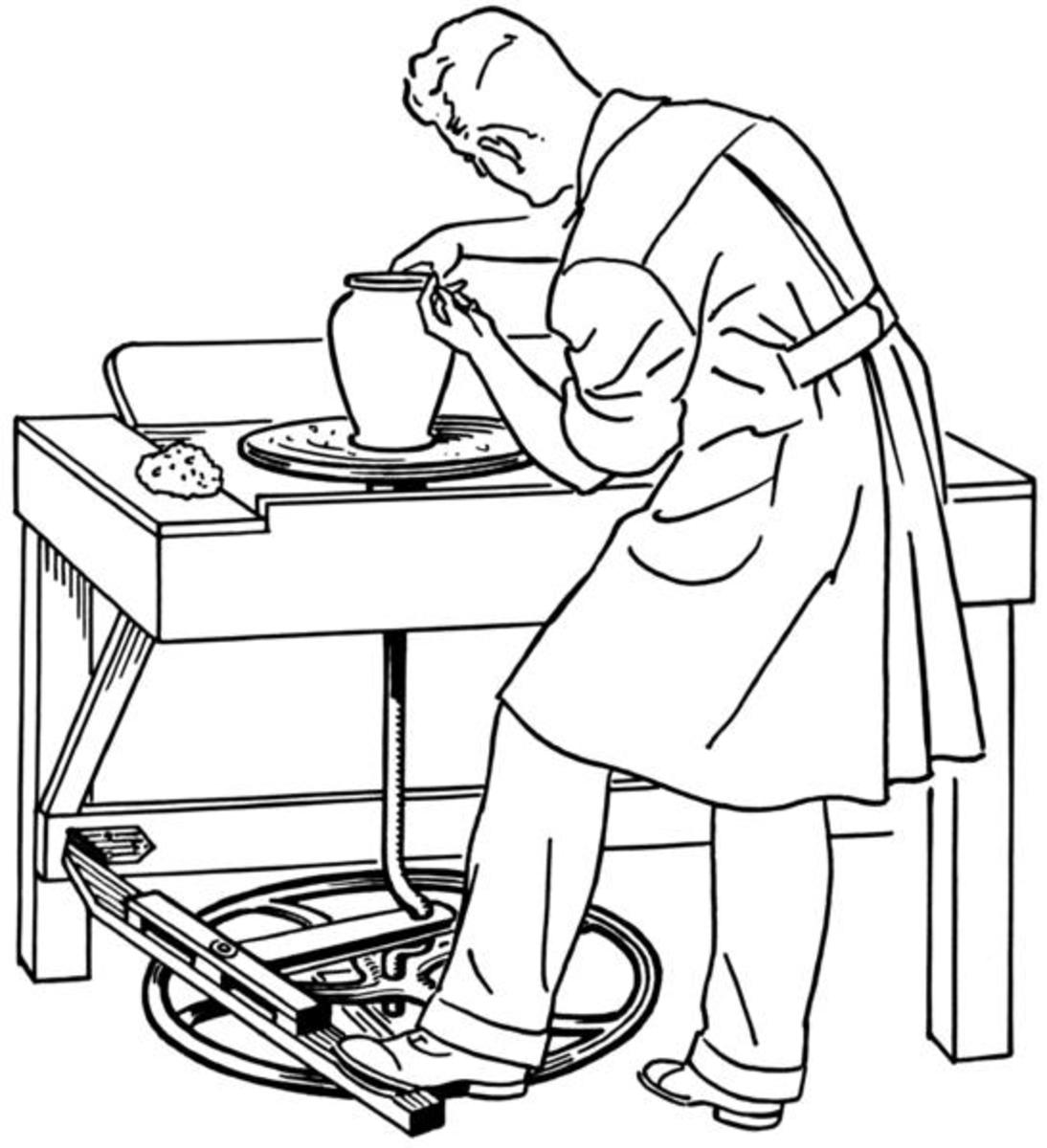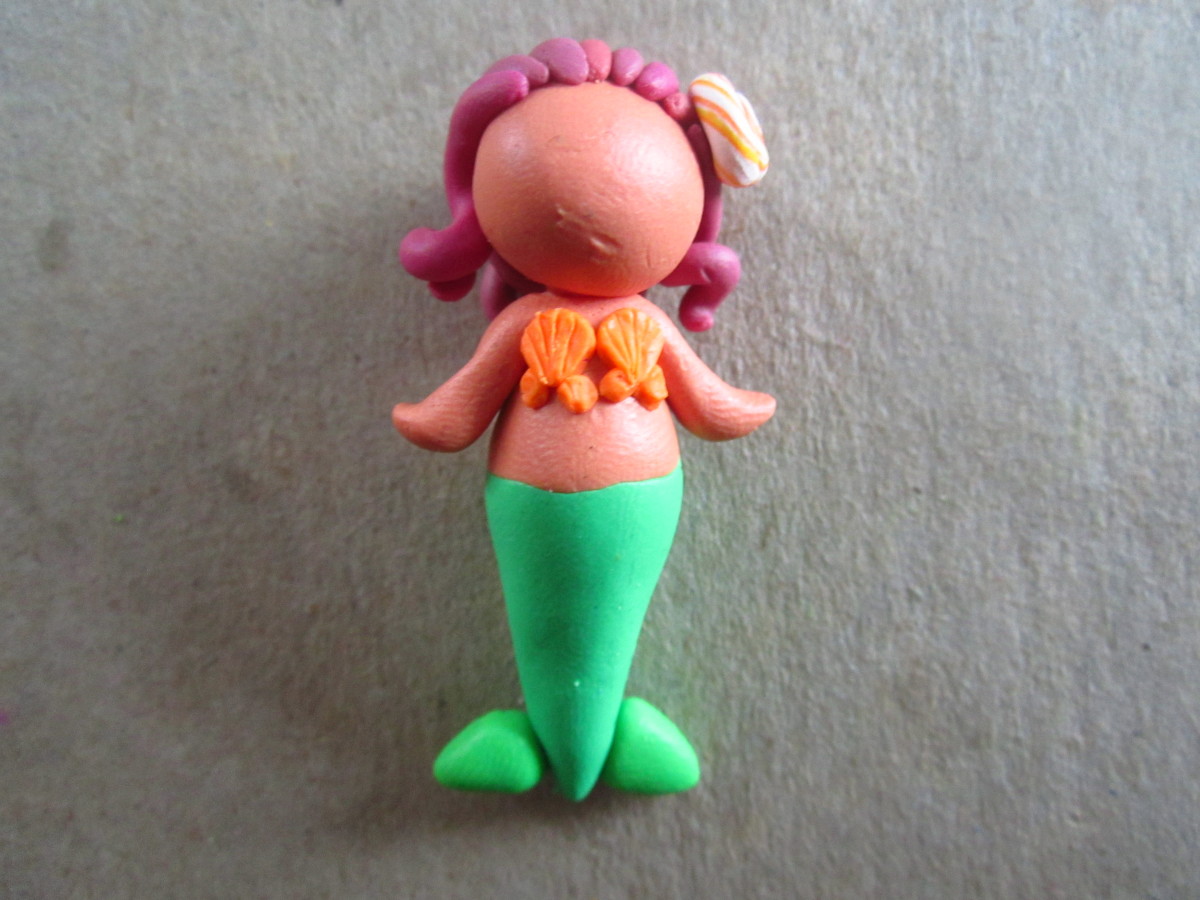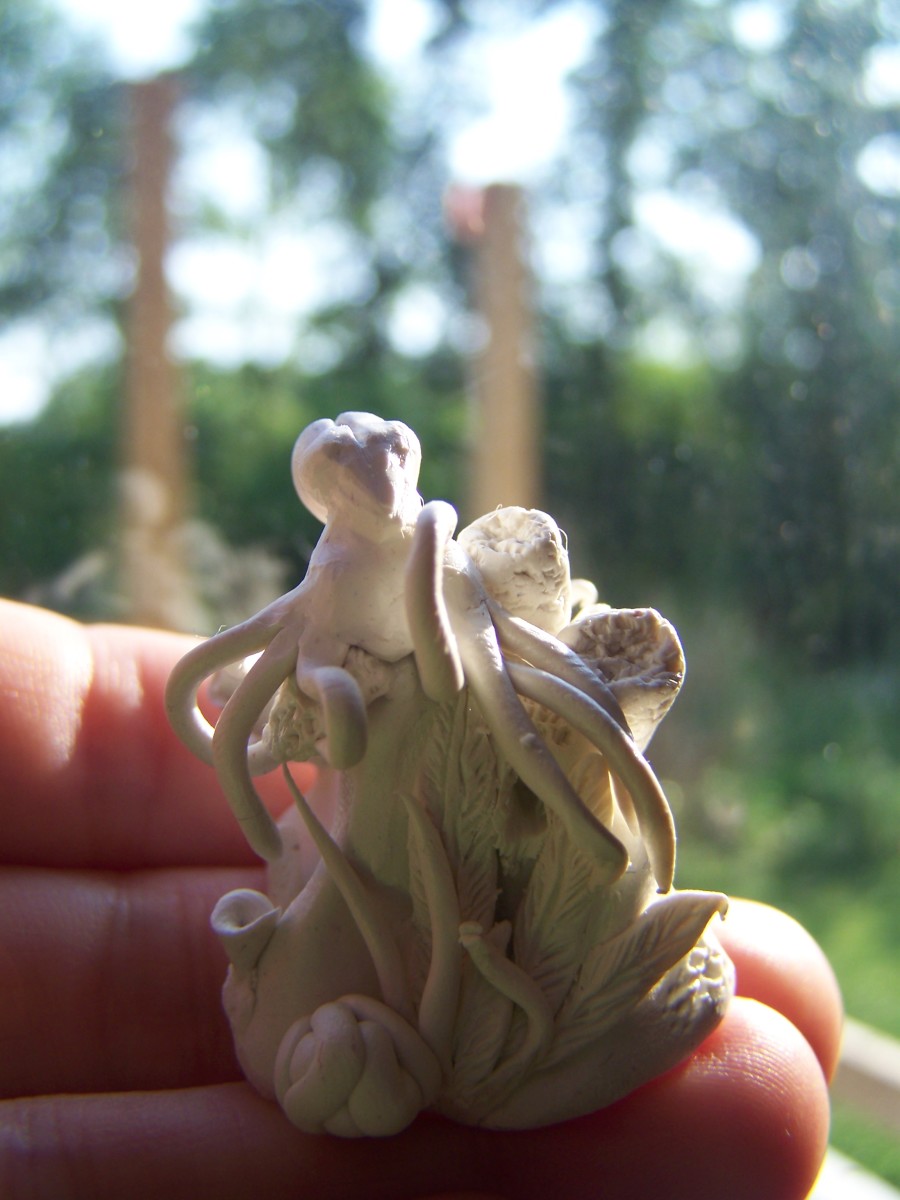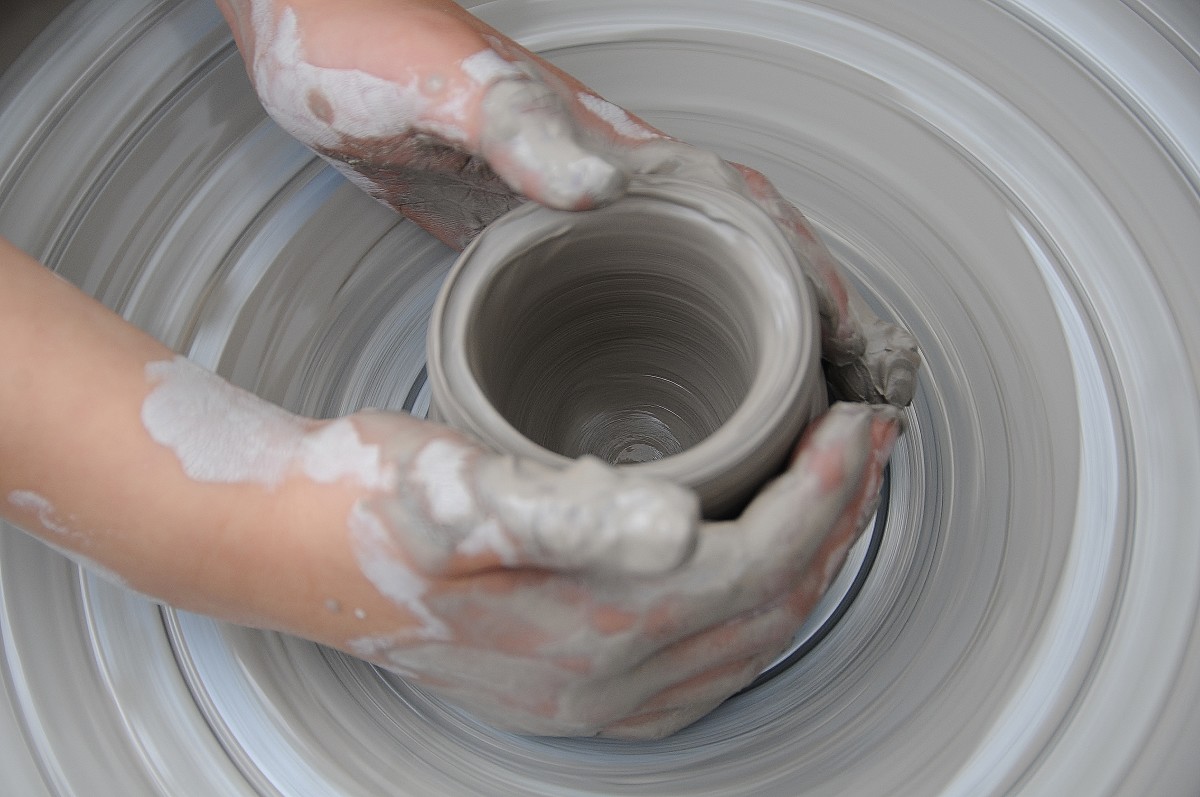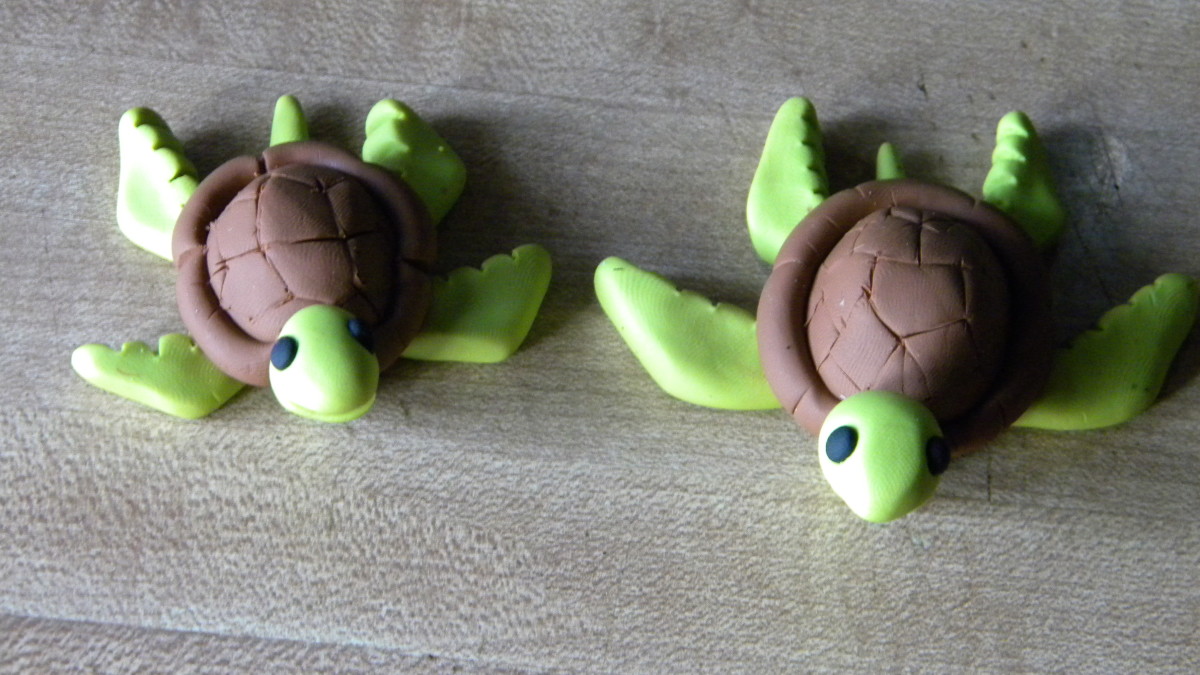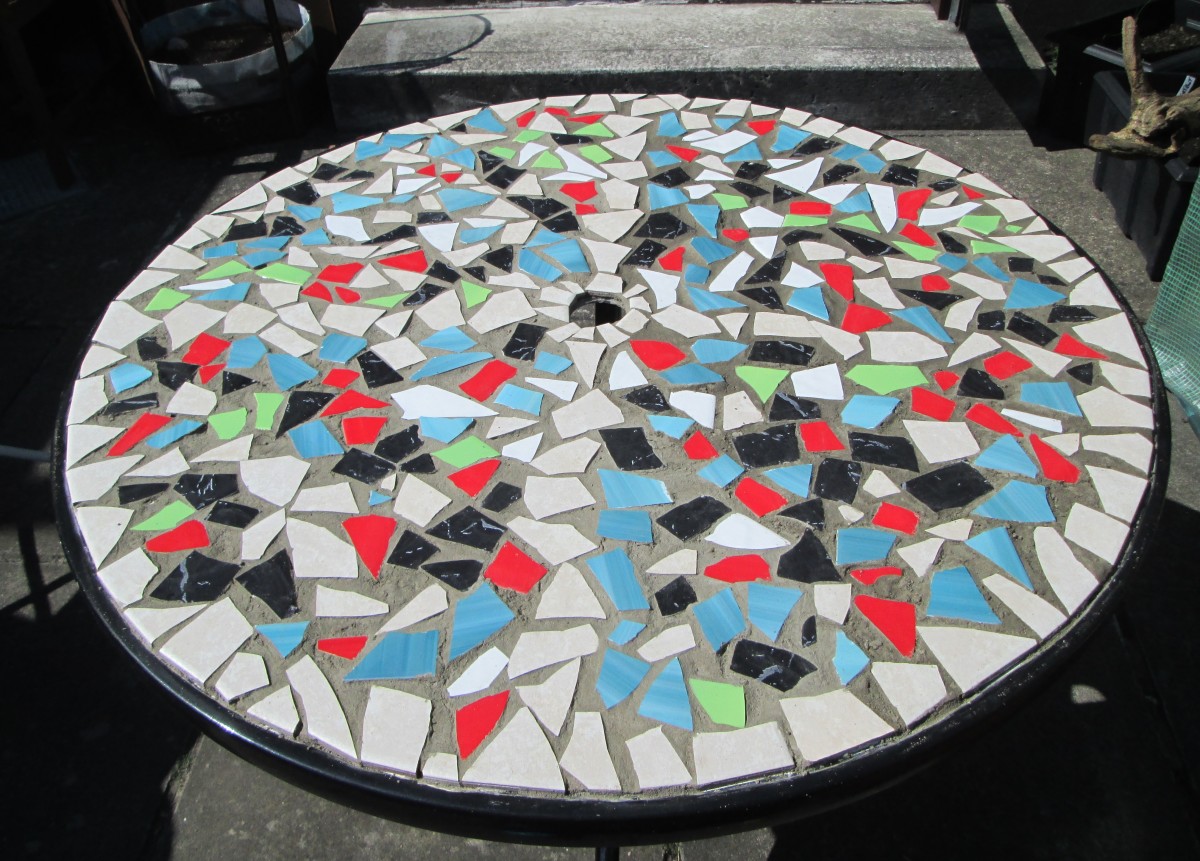Throwing Clay on a Pottery Wheel
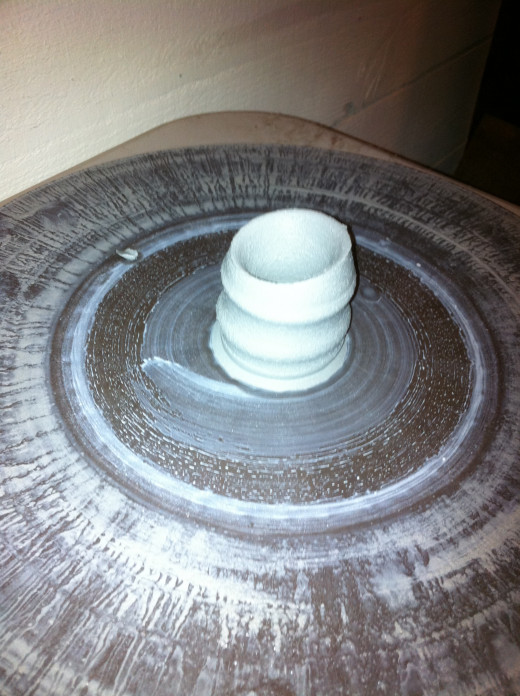
I have been interested in throwing clay on a pottery wheel for a long, long time. Today, quite unexpectedly, I had the chance to give it a try. And, I must say, I am already hooked.
Being the type of person who likes to eat dessert before dinner, I was sure to inquire right away about where I could turn for more. And so I learned that local community colleges are often great venues for taking a pottery class for more formal training. Here you may also find a kiln that you can use to fire your pieces, even if you practiced making them at home. And obviously like-minded people who will share your artistic passion.
But as for today, the class was taught in an informal setting. With just two of us participating, it felt nearly like private, one-on-one instruction. I learned so much in the one hour I spent with our instructor that I feel at ease at a pottery wheel now and am able to let my creative side do most of the work.
The three basic tools
I love that there are only 3 basic tools, apart from the clay, needed to get you started.
- Pottery wheel with a pedal to control the speed
- Bucket of water
- Sponge
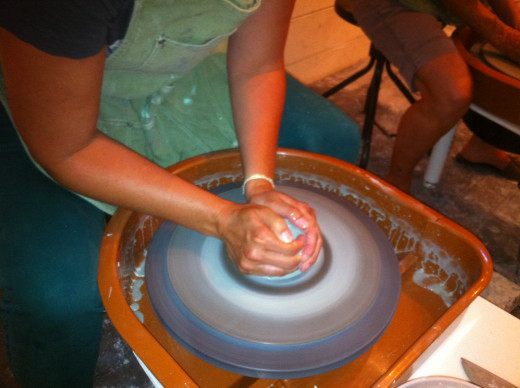
Getting Ready to Throw Pottery
After I removed all of my rings and bracelets as well as tied on an apron, the instructor handed me a piece of clay roughly the size and weight of a one pound brick. We began by kneading the clay and shaping it into a ball, being careful not to fold it. Folding it would create the potential for air bubbles which I learned would compromise the look and strength of the final piece.
Next, we forcefully threw the clay onto the pottery wheel, trying to get it centered as best as possible. This took me two or three times to get right. Then, to secure the clay into place, I was taught about pressing my index finger or thumb along the circumference of the clay, thereby creating a strong seal between the clay and the pottery wheel.
Once the clay was secured on the surface, we turned on the pottery wheel. The foot pedal is an easy way to control the speed by pressing slightly upwards (towards your toes) for more or slightly downward (towards your heel) for less movement. The instructor told me that calibrating the wheel to medium speed would be our starting point for today.
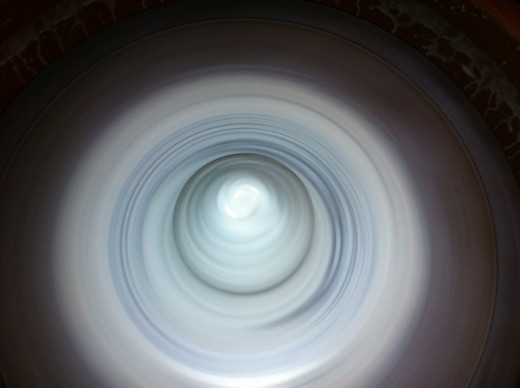
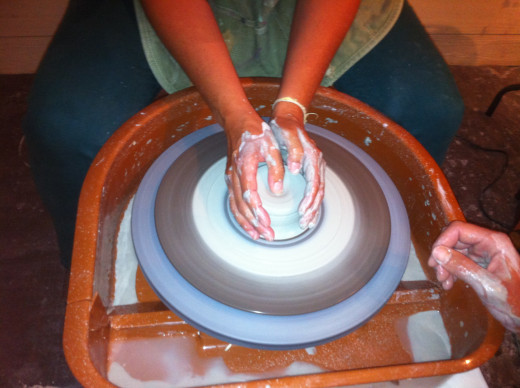
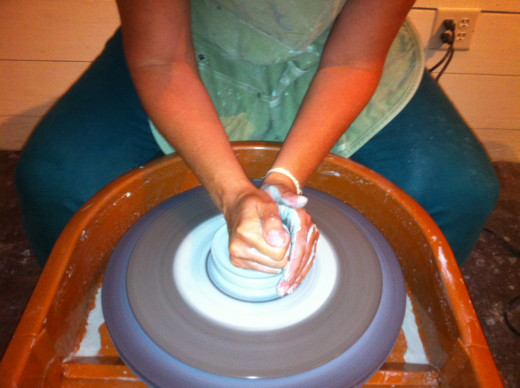
The Importance of Water
Before finally getting our hands dirty, I was given the most important piece of advice when working with clay. It is absolutely necessary to keep the clay moist at all times. You can simply dip a sponge into a bucket filled with water and squeeze it out over the clay. Repeat this step as often as necessary. One good meter is to make sure your hands are never sticking to the clay. Think working with dough in the kitchen and using flour to release it from your hands.
Five Key Steps to Throwing Pottery
There are five key steps for throwing, which I found to get progressively harder:
- Centering: slowly apply downward pressure equally to all sides of the clay; when the clay is ‘centered’, it will be spinning while your hands remain still around the clay.
- Opening Up: place tip of one thumb in the center of spinning clay; other hand is cradling the clay; slowly roll thumb down in center of clay while maintaining pressure on all sides of the clay body; one hand is cradling the clay while the other is in a fist and pressing down on the clay; alternatively, you can cradle the clay with both hands and use both thumbs to do the pressing, too.
- Flattening the Base: pull thumb outward from center of base and create vertical walls; leave ½ inch of clay at the base
- Making a Pull: manipulate the clay from the 3 o’clock position on the wheel; use fingertips when making a pull; slow down the speed of the wheel; slowly apply/release pressure of the clay
- Creating a Form: Pull clay upward and inward to create a ‘volcano’ shape; Pull clay until you have a uniform thickness throughout; shape clay with fingertips until you have your desired form
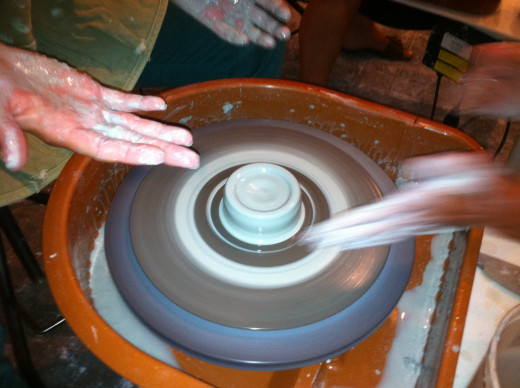
Your Vision Versus The Reality
There is something to be said for leaving the clay alone once you have arrived at a shape you enjoy. While it might be tempting to keep working and making small changes, you also run the risk of ruining your work. Especially as a novice this is a true risk. You can go from good to bad in a matter of seconds. It happened to me twice in one sitting.
Also, while it is a good idea to start with a vision of what you would like to make, it is absolutely imperative to keep an open mind. A cup, bowl or vase are known to be the easiest shapes for beginners. But somehow, and much by accident I must admit, my clay went from being a vase to a cool dish with a cylinder in the center to hold my rings. No sense in trying to mold it back into a vase.
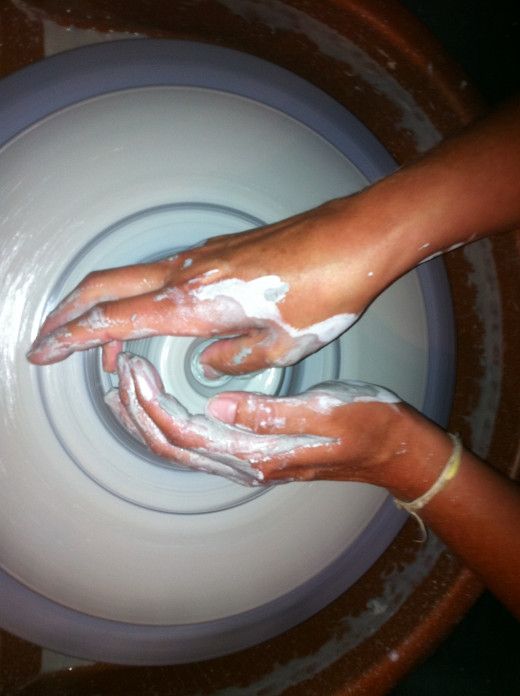
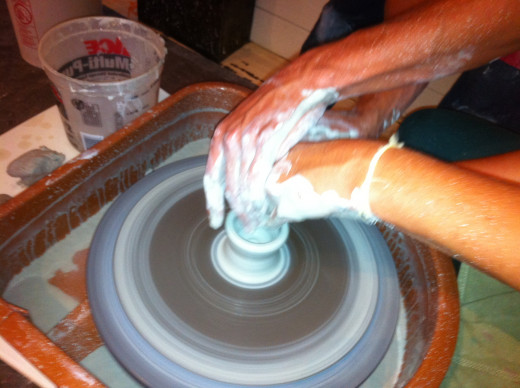
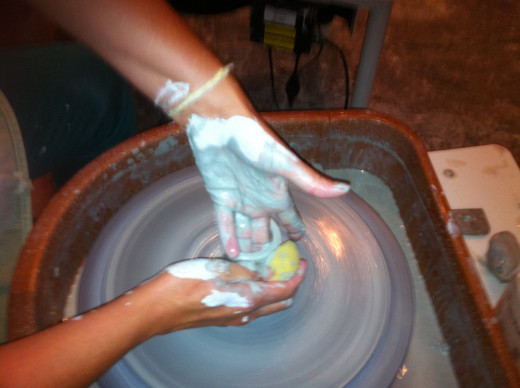
The Softer Side of Throwing Pottery
The instructor shared with me that developing the skills to throw pottery takes a long time. In part this is because throwing pottery is a difficult skill to teach. The individual needs to learn how to self-calibrate his or her touch. At times, working with clay requires a good amount of strength, quickly followed by very delicate strokes. This combination of movements will only become intuitive if you practice, practice, practice.
Speaking of practice, I never knew that throwing pottery is a very zen like experience. My eyes were opened to the importance of a gentle touch (once your clay breaks, your only choice is to start over or continue with the smaller piece that is left on the wheel). I learned about the importance of breathing (taking a deep breath before each step you take, and exhaling in one slow continuous breath). This leads to much steadier hands and more even movements. And, obviously, concentration is key. Being able to ignore outside noise leads to better focus and more seamless work.
I also never knew that sitting by a pottery wheel is a bit like exercising. When done properly, it literally requires that you engage your entire core. Sitting with your legs apart and straddling the wheel, your elbows are tucked into your waist or hip while you apply pressure with your hands on the clay. Much like doing a squat, except that you have the luxury of a stool to prop you up.
Finally, I was surprised to find out that clay needs to dry for two weeks before it can get fired. I felt like a little kid when I was told that I could not take my creations home before the end of our trip. But think desert, not dessert. With the heat of the daytime sun and the flash storms that bring a sudden burst of water, the ground is very prone to cracking. You don’t want the same happening to your beautiful creations.
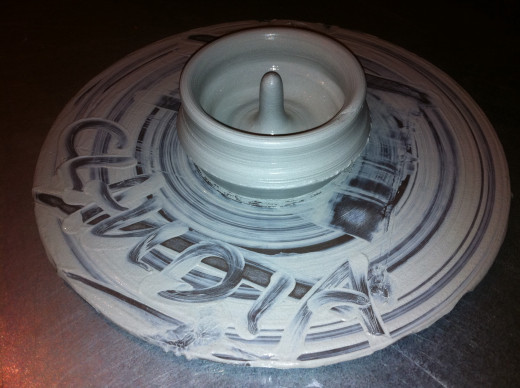
Last Piece of Advice
PS: One more hint – your nails should be very short before you work with clay. Otherwise they will get in the way and leave unwanted designs on your work.

